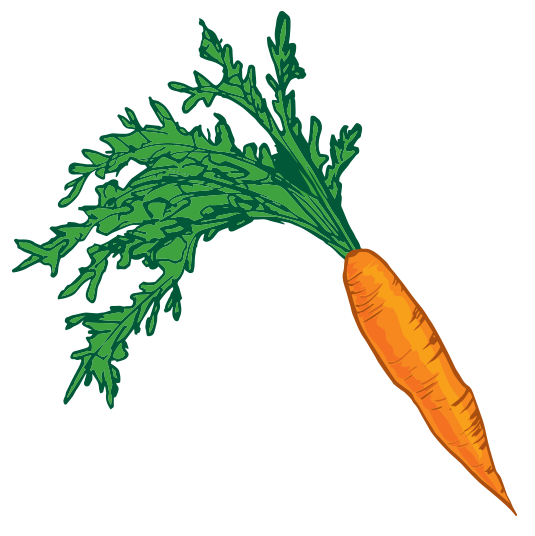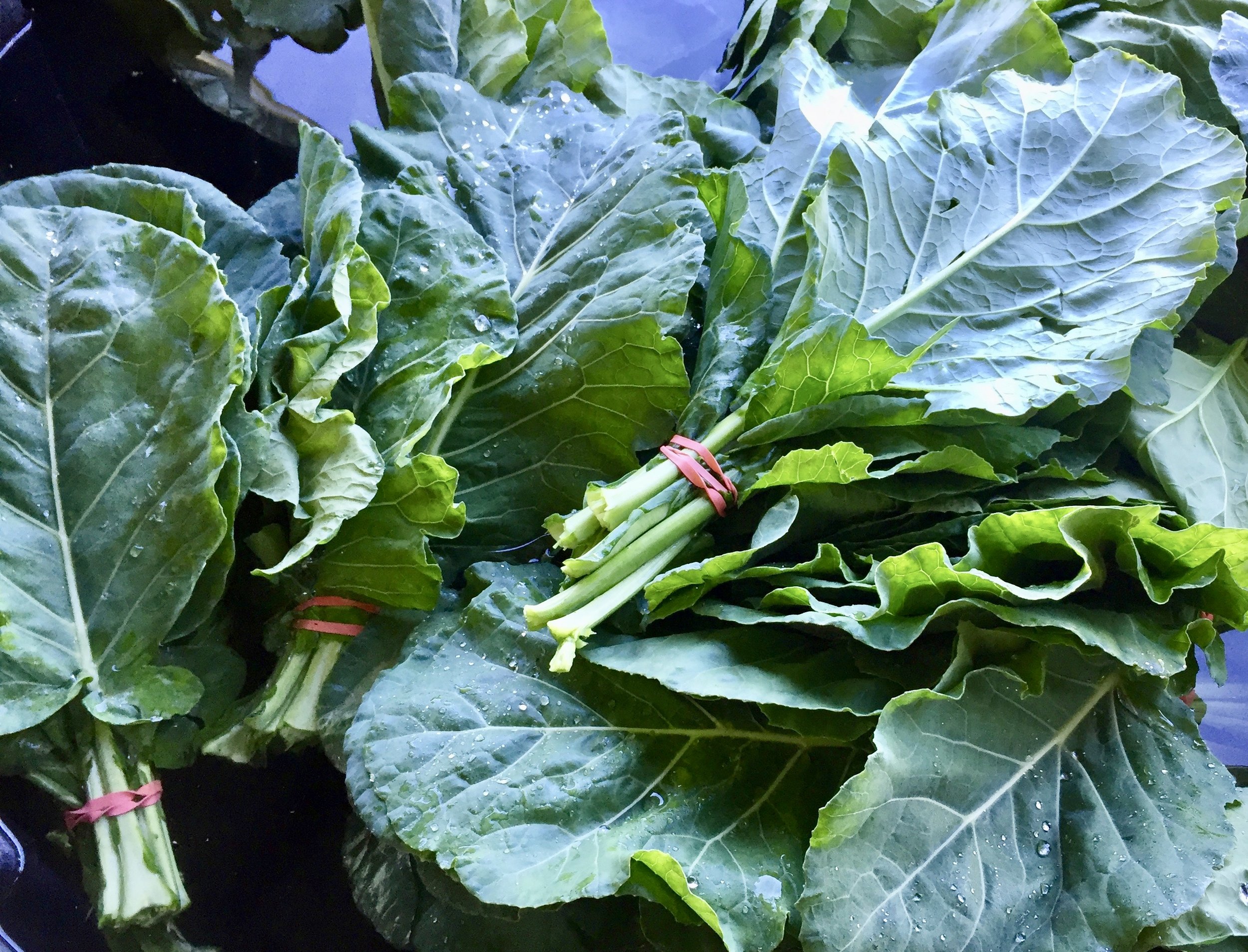Farm News August 27, 2024
Our Farmstand is in full swing
******
(PYO & Farmstand Hours):
Tuesday, Thursday, & Friday: 2 - 6:30 PM
Saturday: 8 am - 12:30 pm
******
After the big storms came through a week ago, it seemed like we just flipped the calendar from summer to fall even though we still have a chunk of August remaining. Very cool nights and mornings have made it feel more like late September. We’ve seen some slowing of a few crops but harvests continue to remain strong. We will have corn for a few more weeks, cukes and tomatoes continue to come in from the hoop houses, and the chard, kale, salad mix, and sprouting broccoli are loving this weather. We’re trimming up the excellent onion and garlic crops, fresh ginger is sizing up nicely, and the fall roots are looking great.
One crop that always hits the skids when cool nights set in is zucchini. As we build more hoop houses we find ourselves with some room for experimentation, so in July we planted a summer greenhouse crop of zukes and it made remarkable growth. Luca and Tom sowed the seeds and 4 days later they were up, and in another 2 weeks we had flower buds. With some luck we should be able to start picking next week.
It's both time consuming and fun to harvest fresh edamame. It's also a joy to offer it to folks who rarely see it offered locally and may never have seen it in plant form.
On another note, one podcast I listen to occasionally is “Death, Sex, and Money. The tag line is “things we think about a lot and need to talk about more”. We rarely bring up money in this newsletter space, but today we wanted to talk about credit cards. Ubiquitous, convenient, and full of perks for the user, most folks don’t think twice about paying with plastic. It’s not widely known by the general public, but businesses pay for most of these benefits through hefty fees levied when a customer uses a credit card. For small businesses, that fee is usually around 3% to 5%. For our farm, credit card fees have gone from zippo in 2015 to something north of $15k a year. These fees rob businesses like ours of funds for increasing crew pay, upgrading facilities and equipment, and small business owners’ bottom line. Online services like Venmo and Paypal charge similar fees for business accounts.
Fall greenhouse planting has only just begun! Here sit baby kale seedlings, which we will now have to protect from hungry bunnies.
Regardless of how you pay, we really appreciate that you make a special trip to our farm or to a farmers’ market we attend; if you have no other option than credit cards (or are ordering online in the winter), go for it! But if you can pay with cash or check, you return $3 for every $100 spent to the farm, and over the course of a season that can add up to some real money that we can put back into the business.
We hope to see you at the farm or a farmers’ market soon,
Paul, Rebecca, and the Fort Hill Farm crew
Faye's bird's-eye view of lovely weed-free beds prepared for seeding arugula.
Featured veg:
Collard greens: perhaps one of the most unassuming, overlooked greens that, conversely, has quite the cult following. We love them. Stir fry/braise with slow-cooked leeks for a real treat, try the yummy recipe below, or even better, the Caldo Verde recipe from the 2018 newsletter https://www.forthillfarm.com/blog/1689. You won’t be disappointed!
Kennebec potatoes: While its medium starch level and low water content lend this spud specifically to frying, it also has a following as a great all-purpose potato: great mashed, roasted, baked ... (Elliott has always sworn by baking them to great success). Either way, turn on the oven one of these cooler nights and enjoy!
Also available:
Head lettuce; salad mix; arugula; pea shoots; curly and lacinato kale; rainbow chard; purple, red and French Breakfast radish; cilantro, parsley, dill, basil; red beets, chioggia beets and gold beets; Tendersweet and red cabbage; garlic scapes; zephyr & patty pan summer squash; slicing cucumbers; heirloom and beefsteak tomatoes; sungold, artisanal, and red cherry tomatoes (ON SALE!); carrots; sprouting broccoli; German Extra Hardy garlic; Ailsa Craig and Red Torpedo onions; jalapeño, cayenne, poblano (limited) and shishito peppers; Sweet Red Italian and orange snacking peppers; Classic Italian, Graffiti, and Rosa Bianca eggplant; sweet corn; Blue Gold and Satina Gold potatoes; August Ambrosia and regular Red watermelon (while they last); leeks; fresh edamame; fresh ginger
Coming Soon:
Magic Molly potatoes
Pick Your Own:
Perennial Herbs:
There are HERB RINGS provided to establish the bunch size.
Chives and Oregano: trim long lengths from the base of the plant, leaving 1” behind
Sage: clip 4 - 6 inches from the largest stems
Thyme: clip 4-6 from the perimeter of the plant
Flowers:
Bouquets on SALE! There is a full selection of blossoms out there. Be sure to use the flower ring provided to establish the bunch size.
Recipes
Suggested by Rebecca Batchie
Not into this particular recipe? For more recipes outlined by crop, check out the Fort Hill Farm Recipe Database.
Greek Collard Green Wraps with Tzatziki
These healthy wraps are made with crisp collard greens, lemon herb quinoa, and creamy vegan tzatziki. The wraps stay crisp in the fridge, so you can enjoy them for dinner - and tomorrow's lunch.
Prep Time 25minutes mins
Total Time 25minutes mins
Servings: 2
Author: EvergreenKitchen
Ingredients
Lemon Herb Quinoa
1½ cup cooked quinoa
2 tablespoons lemon juice
1 tablespoon extra virgin olive oil
2 tablespoons minced flat leaf parsley
1 teaspoon dried oregano
¼ teaspoon fine sea salt
Black pepper (to taste)
For Assembly
1 bunch collard greens (about 8 medium leaves, see note 1)
¾ cup Vegan Tzatziki Sauce (see recipe below)
½ English cucumber, cut into matchsticks
2 red, orange, or yellow bell peppers, cut into matchsticks
1 cup cherry tomatoes, quartered
¼ cup kalamata olives, pitted and chopped
¼ cup diced red onion
¼ cup chopped mint
Instructions
Lemon Herb Quinoa: In a medium bowl, stir together quinoa, lemon juice, and olive oil. Sprinkle in parsley, oregano, salt and pepper. Stir to mix.
Trim collard greens (see note 2): Set a collard green face-down on a cutting board, with the stalk side facing up. Starting near the top (rounded) end, slide a knife down the stalk to shave off as much of the stalk as possible (careful not to cut the leaf!). Repeat with remaining leaves.
Assemble: Position a collard green with the back/stem side up. Generously spread tzatziki into the middle. Top with quinoa, cucumber, bell peppers, tomatoes, olives, red onion, and mint. Roll the wraps like a burrito: tuck in the short sides, then roll tightly. Refrigerate extras.
Notes
Collard greens: The number of wraps will vary based on the size of the collard green leaves and how much filling you add to each. Have a few extra leaves on hand in case you need them. Smaller leaves are harder to fill and roll, so opt for medium or large sized leaves for this recipe.
Trimming collard green stalks: For a visual example of this step, refer to post photos. Trimming the stalk makes the leaf more flexible for rolling. Be careful not to cut the leaf itself, because that'll allow the filling to fall out.
Best Vegan Tzatziki
Ingredients
¾ cup raw cashews, soaked and rinsed (see note 1)
¼ cup fresh lemon juice (about 2 lemons)
3 tablespoons cold water
½ English cucumber
1 tablespoon chopped fresh dill (more for garnish, optional)
½ teaspoon garlic powder
½ teaspoon fine sea salt
Black pepper (to taste)
Instructions
Blend cashew base (see note 2): Add cashews, lemon juice, and water to a high-speed blender. Blend until smooth and creamy, scraping down the sides as needed. Set aside.
Prep cucumber: Grate cucumber using the large holes on a box grater. Transfer cucumber to a clean kitchen towel, nutmilk bag, or cheesecloth. Squeeze out as much liquid as you can. Set aside.
Mix: To a medium bowl, combine blended cashew base, drained cucumber, dill. garlic powder, and salt. Stir well to mix. Add pepper to taste and adjust seasonings if needed. (If you prefer your tzatziki to be more runny, you can thin it with a bit more cold water). Refrigerate until cool.
Notes
How to soak cashews: Cashews should be pre-soaked until soft when squeezed between your fingertips. Add cashews to a heatproof bowl and cover them with boiling water, letting them sit for about 30 minutes to soften. Or alternatively, soak in room temperature water for 6 to 8 hours.
Blender container: If you have an extra-wide blender container, you'll likely need to double the recipe to create enough volume for the blades to spin effectively.
Yield: Makes about 1¼ cups per batch. Assumes ¼ cup per serving.
* * * * * * * * * *






